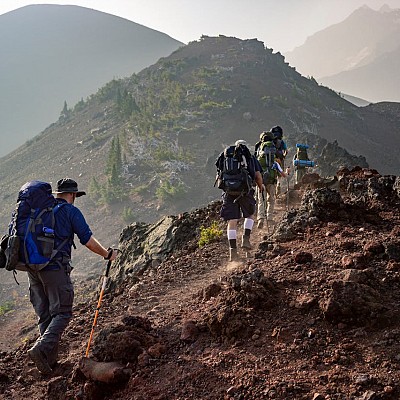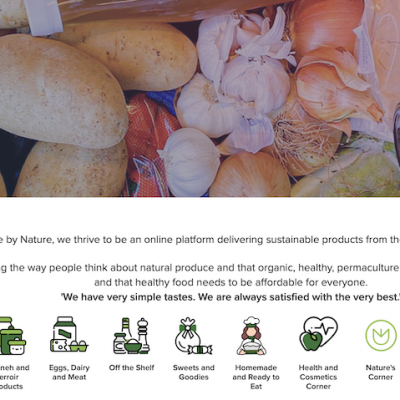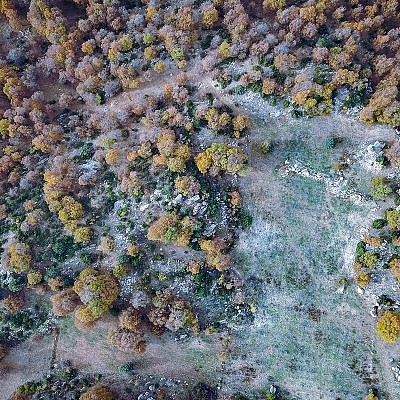UNESCO has approved the designation of 11 new biosphere reserves in 11 countries, including Belgium and Gambia for the first time and two transboundary biosphere reserves. The other new biosphere reserves are located in Colombia, Dominican Republic, Italy, Mongolia, the Kingdom of the Netherlands, the Philippines, Republic of Korea, Slovenia and Spain. With these new biosphere reserves covering a total area of 37 400 km2, equivalent to the size of the Netherlands, the World Network of Biosphere Reserves now totals 759 sites in 136 countries.
“The new designations come at a pivotal moment for humanity, as it grapples with a global biodiversity crisis intertwined with climate disruption. At a time when the international community is being called upon to increase the number of protected areas, these new biosphere reserves play an essential role in sustainably preserving the biodiversity, improving the living conditions of local populations and Indigenous Peoples and fostering scientific research,” said Audrey Azoulay, Director-General of UNESCO.
These additions were decided during the 36th session of the International Co-ordinating Council, the governing body of UNESCO’s Man and the Biosphere programme, which is composed of 34 representatives of UNESCO Member States. The Council held its session in Agadir, Morocco, from 2 to 5 July following the UNESCO Conference on Soils.
Biosphere reserves are an essential component of UNESCO's mandate as the United Nations’ organisation for sciences. Each biosphere reserve promotes innovative local sustainable development solutions, protects biodiversity, and addresses climate disruption. They also support local and Indigenous communities through practices such as agro-ecology, water management, and the generation of green income.
Biosphere reserves contribute to helping achieve the targets set by States upon the adoption of the Kunming-Montreal Global Biodiversity Framework in December 2022, which includes designating 30% of the Earth’s land and marine surface as protected areas and restoring 30% of the planet’s degraded ecosystems by 2030.
The 11 newly designated biosphere reserves are:
Kempen-Broek Transboundary Biosphere Reserve (Belgium, Kingdom of the Netherlands)
Nestled within a picturesque expanse of low-lying terrain adorned with gently undulating sand covers, Kempen-Broek offers a captivating blend of natural wonders and human history. Once expansive wetlands have been transformed into farmlands since the 19th century but the area retains remnants of its marshes, punctuated by ponds, open marshlands and bog forests.
Renowned as one of Belgium’s and the Netherlands' prime habitats for dragonflies, the region’s stream valleys also feature meadows and fields, whereas the higher elevations are mostly used for agriculture. Towards the north, vast expanses of moorland and inland dunes preserve intriguing prehistoric sites.
Scattered amidst this rich tapestry are villages and towns nestled on higher ground, while diverse bird species flourish across varied landscapes.
Spanning 264 km2, the biosphere reserve is home to approximately 75 000 people, with tourism and agriculture being its economic pillars. It is the first biosphere reserve to be designated in Belgium and is shared with the Kingdom of the Netherlands.
Darién Norte Chocoano Biosphere Reserve (Colombia)
Amidst the vibrant Darien ecoregion, within the Biogeographic Chocó, lies a biodiversity bridge connecting the fauna and flora of North and South America, with emblematic species like the majestic harpy eagle (Harpia harpyja) and the colourful poison dart frogs. Encompassing a sprawling mosaic of ecosystems ranging from lush tropical rainforests to marine areas along the Gulf of Urabá, it covers a vast territory spanning 3 016 km2, almost 40% of which consists in marine areas.
The archeological park and museum are a tourist destination. They tell the story of how the region came to host one of the first Spanish settlements on the American continent, the town of Santa María La Antigua del Darién, founded in the early 16th century.
The biosphere reserve has a diverse population of 24 287, predominantly composed of Indigenous Peoples and Afro-Colombian origins. The local communities were actively involved in submitting the proposal for designation to UNESCO, particularly young people and women. The management plans for the protected areas within the new biosphere reserve include adopting sustainable farming, enhancing the marketing chain for agricultural products and advancing the Community Ecotourism Plan.
Madre de las Aguas Biosphere Reserve (Dominican Republic)
In the heart of the Dominican Republic, Madre de las Aguas Biosphere Reserve is a sprawling expanse that encompasses 11 provinces and 35 municipalities, sheltering a population of 472 526 and spanning 9 374 km².
This territory is characterized by its diverse topography, which has been sculpted by the Cordillera Central. An array of natural wonders ranging from plateaus to cascading waterfalls form an intricate tapestry of landscapes. This biosphere reserve features four distinct ecosystems which harbour 88 avian species, 20 of which are endemic and 17 under threat. The Sparrowhawk (Buteo ridgwayi) is deemed to be Critically Endangered by the International Union for Conservation of Nature, for instance.
Local stakeholders believe that the designation of the biosphere reserve will have a positive impact on current conflicts over land by providing opportunities for dialogue and sustainable development through ecotourism and agriculture primarily.
Niumi Biosphere Reserve (Gambia)
Stretching along the north bank of the Gambia River, the biosphere reserve lies adjacent to Senegal’s Delta de Saloum Biosphere Reserve in the north. Within its boundaries, mangroves dominate the coastal areas and riverbanks, whereas, downstream, striking red limestone formations punctuate tropical forests and open savannah woodland.
The biosphere reserve safeguards some of West Africa's last pristine mangrove forests, alongside the Bao Bolong Wetland Reserve and various State forests. Notably, the biosphere reserve encompasses a Ramsar wetland and the UNESCO World Heritage site Kunta Kinteh Island, historically known as a place where enslaved peoples were held before being transported to the Americas during the 16th and 17th centuries.
With a sprawling expanse of 1 937 km2, the biosphere reserves is home to approximately 178 000 inhabitants, who make a living mostly with farming and fisheries. It is the first biosphere reserve to be designated in The Gambia.
Colli Euganei Biosphere Reserve (Italy)
This picturesque landscape in the Veneto region of northeastern Italy is defined by no fewer than 81 volcanic hills, including the towering Monte Venda which rises amidst thermal spas and verdant plains adorned with olive groves and vineyards.
Spanning 15 municipalities, the area is rich in both natural and cultural heritage. The region's volcanic history and thermal waters contribute to its allure, making it the largest thermal basin in Europe. With a total area of 341 km2, the biosphere reserve hosts a population of 111 368.
Endowed with a diverse array of flora and fauna endemic to the Veneto plain, the biosphere reserve has established partnerships with universities and a comprehensive management framework. The Euganean Hills (Colli Euganei) are of volcanic origin. This region is fostering sustainable agriculture and ecotourism while ensuring participatory governance, in order to lay the groundwork for a harmonious coexistence between human economic activities and environmental preservation.
Julian Alps Transboundary Biosphere Reserve (Italy, Slovenia)
This transboundary biosphere reserve is the result of the merger of two Slovenian and Italian biosphere reserves which had been designated in 2003 and 2019, respectively. The transboundary biosphere reserve spans 2 671 km2, encompassing core areas of 735 km2, buffer zones spanning 438 km2 and transition areas totalling 1 497 km2 which are home to 109 060 inhabitants across 20 municipalities.
The area boasts a patchwork of alpine mountains and karst plateaux dotted by waterfalls and pristine lakes. The rich biodiversity includes brown bears, lynxes, otters and wildcats.
The nomination of this transboundary site was meticulously crafted through a participatory planning process involving 176 institutions and organizations from both countries, as well as students, research groups and representatives of the tourism industry.
Khar Us Lake Biosphere Reserve (Mongolia)
Situated in the expansive western expanse of Mongolia, Khar Us Lake Biosphere Reserve occupies a vast depression within the Great Lake basin spanning 14 153 km2 in the Khovd Province. Its diverse ecosystems encompass aquatic realms, deserts, high mountain terrain and steppe landscapes, each contributing to the region's ecological richness.
The biosphere reserve has a core area of 703 km2, a buffer zone of 7 800 km2 and a transition area of 5 650 km2. The biosphere reserve is governed by Mongolian national legislation, ensuring a balance between nature conservation and sustainable development. The biosphere reserve is not only a haven for rare and endangered species but also for cultural heritage, as it is home to diverse ethnic groups whose livelihoods revolve around a sustainable form of animal husbandry.
Efforts are under way to develop sustainable ecotourism, aligning with Khovd Province's focus on heritage-based tourism for economic diversification. Local herders have formed community-based organisations to safeguard their pasturelands and wildlife, highlighting their dedication to conservation and sustainable livelihoods.
yApayaos Biosphere Reserve (Philippines)
This biosphere reserve in the Province of Apayao is divided into two distinct regions: the Upper Apayao sports rugged terrain with towering peaks, plateaus and valleys, whereas the Lower Apayao features flatlands adorned with rolling hills and plateaus. Stretching 180 km, the majestic Apayao River serves as a vital watershed, nurturing 18 tributaries across the province.
yApayaos is a name that encompasses both the people and diverse flora and fauna living in the area. There are various ethnolinguistic groups and ten Indigenous Cultural Communities whose traditions and laws are deeply intertwined with the land and its resources. Notably, the Isnag/Isneg community constitutes 30 percent of the population; it upholds the Lapat system, a unique customary practice regulating the use of natural resources and protection of the environment.
Recognized for its ecological significance, Apayao harbors the Apayao Lowland Forest Key Biodiversity Area, which has high levels of endemism and serves as a refuge for critically endangered species like the Philippine eagle (Pithecophaga jefferyi).
The population of 124 366 engages primarily in rice and corn cultivation. However, ecotourism is progressing in the province. The biosphere reserve spans 3 960 km².
Changnyeong Biosphere Reserve (Republic of Korea)
Located in the central northern region of Gyeongsangnam-do Province, Changnyeong Biosphere Reserve forms a tapestry of biodiversity and cultural heritage.
Encompassing habitats ranging from the lush forests of Mount Hwawang to the sprawling Upo Wetland and agricultural croplands, the region's diverse landscapes spans 531 km2. It serves as a sanctuary for several species, nurturing a delicate balance between freshwater ecosystems, forests teeming with life and sustainable agriculture. Notably, Upo Wetland stands as a testament to successful conservation efforts, exemplified by the restoration of the endangered crested ibis (Nipponia nippon) since 2008. Changnyeong-gun County was recognized as a Ramsar Wetland City in 2018.
With a majority of the population residing in the transition area and buffer zone, the region is pioneering agricultural diversification by cultivating local specialties like onions and garlic alongside ecotourism ventures.
Val d'Aran Biosphere Reserve (Spain)
Nestled at the western frontier of the Catalan Pyrenees, the biosphere reserve spans approximately 632 km2, serving as Catalonia's sole north-facing valley. Its unique position as a watershed between the Mediterranean and Atlantic realms means that it features diverse climatic and biological landscapes. It is also a bastion of Occitan cultural and linguistic heritage.
Home to 9 983 inhabitants, the Val d'Aran has historically thrived on activities ranging from agriculture and crafts to trade. Lately, the re-introduction of brown bears has raised concerns among local livestock farmers.
The designation of the area as a biosphere reserve has been a pivotal step towards improving biodiversity protection and revitalizing traditional practices, in order to halt depopulation and transition to a more resilient rural development model. The biosphere reserve’s management plan has been meticulously designed with village representatives from local associations promoting tourism and animal husbandry.
Irati Biosphere Reserve (Spain)
Irati Biosphere Reserve is located within the mid-mountain expanse of the western Pyrenees. A haven for biodiversity, its expansive forests are dominated by beech and beech-fir, making it the second-largest beech forest in Europe. Encompassing the picturesque valleys of Salazar and Aezkoa in the northeastern reaches of Navarre, it spans 537 km2 and is home to 2 435 inhabitants.
Actively engaged in the nomination process since 2015, the local community has played a pivotal role in shaping the management structure of the biosphere reserve. This structure includes an executive board and advisory board representing diverse stakeholders, ranging from cultural and conservation associations to women's groups. The Irati Biosphere Reserve’s management plan stands as a testament to the biosphere reserve’s community-driven conservation efforts.






































